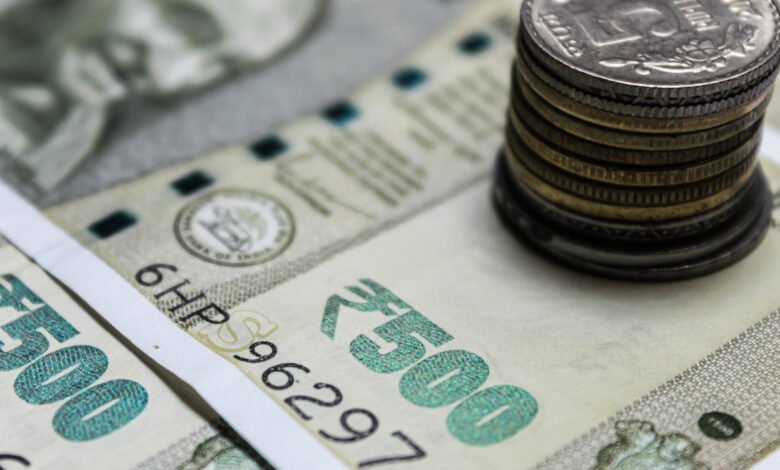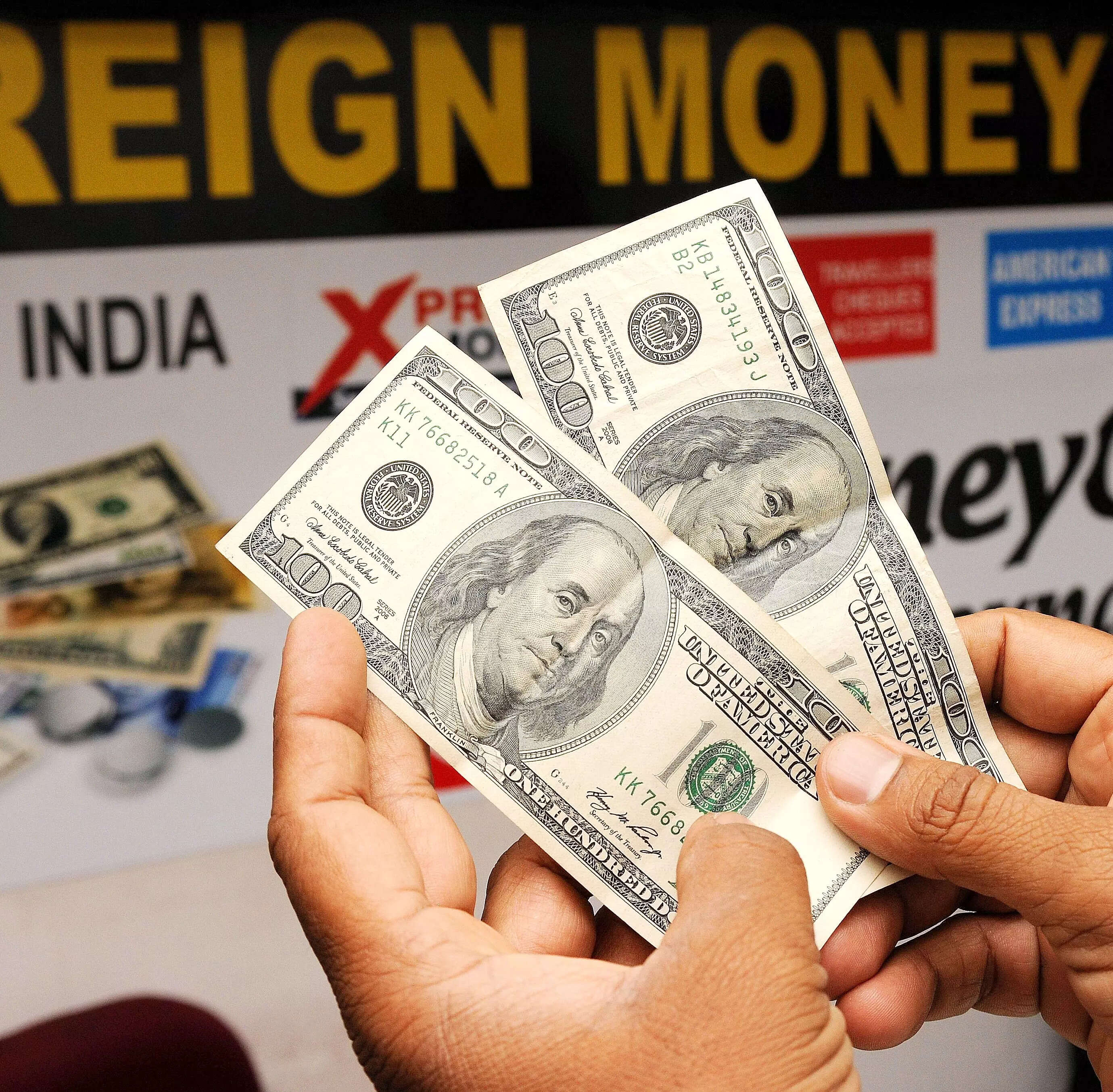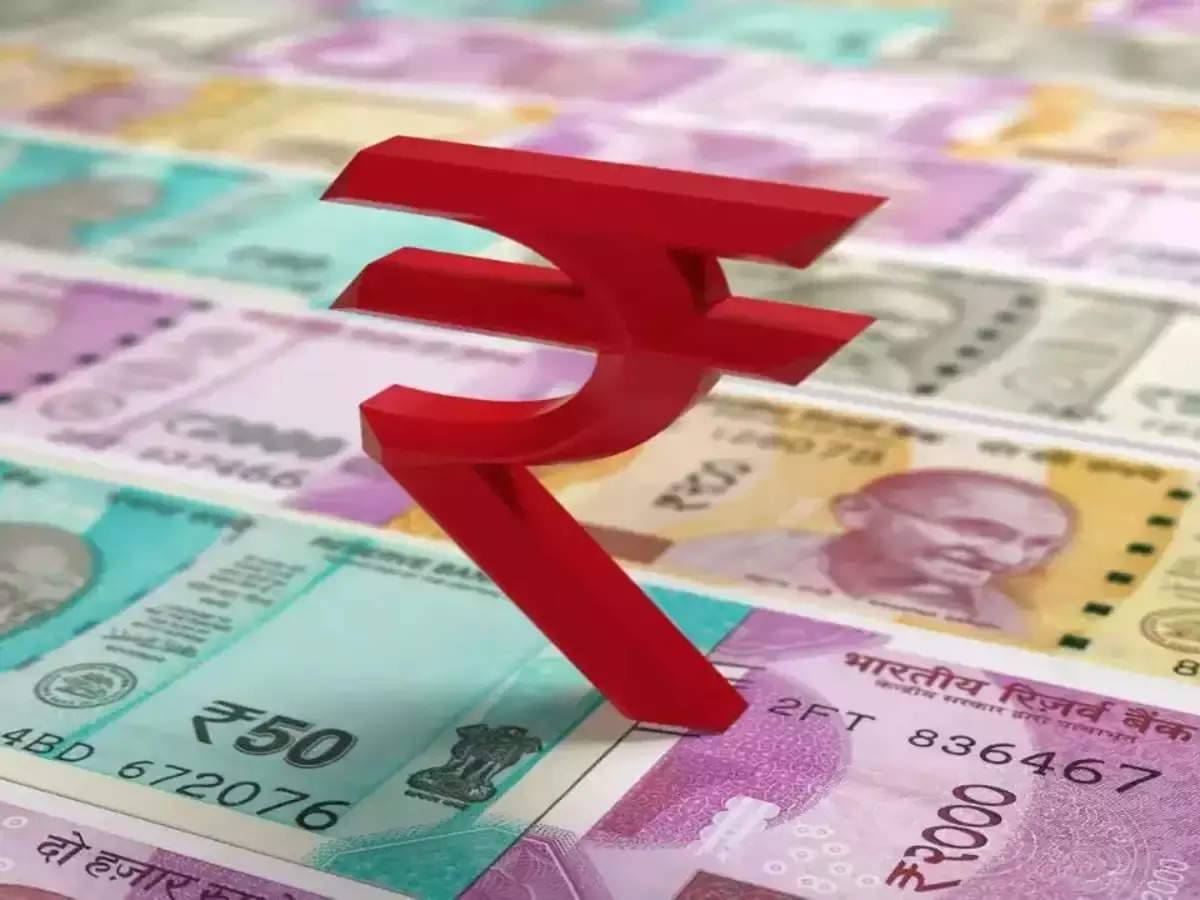The rupee has lost over 25% of its value and here’s either these equities will gain or lose value during this time

The rupee has lost over 25% of its value and here’s either these equities will gain or lose value during this time
The rupee has lost over 25% of its value since December 2014: Sitharaman
According to Union Finance Minister Nirmala Sitharaman, since December 2014, the value of the Indian rupee has declined by over 25% versus the US dollar. The latest decline is attributable to global causes, including rising crude oil prices and the crisis in Russia and Ukraine.
On December 31, 2014, 63.33 Indian rupees were equivalent to one US dollar. According to information provided by the Finance Minister in a written response to a question in the Lok Sabha, the value of the Indian rupee versus the US dollar dropped to 79.41 on July 11, 2022.
On Monday, the Indian rupee dipped to a new low of 79.98 against the US dollar. The Indian rupee’s value has decreased for the seventh day.
“Global issues such as the Russia-Ukraine crisis, skyrocketing crude oil prices, and tightening of global financial conditions are the key reasons for the weakening of the Indian Rupee against the US dollar,” Sitharaman said in response to a highlighted question in the Lok Sabha.
She did inform the lower chamber of parliament that the Indian rupee has appreciated versus other significant world currencies.
According to the Finance Minister, the Indian rupee has strengthened against these currencies in 2022 because they have declined against the US dollar more than the British pound, the Japanese yen, and the Euro.
According to the administration, currency fluctuations are just one element affecting an economy. Another is the decrease in the value of the rupee.
According to the government, the currency’s devaluation will likely increase export competitiveness, which benefits the economy.
According to the government, the cost of imports increases due to the currency’s devaluation.
The Reserve Bank of India (RBI) frequently keeps an eye on the foreign exchange market and steps in when there is too much volatility. She noted that because the Reserve Bank of India hiked interest rates recently, residents and non-residents are now more inclined to hold Indian rupees.
The Finance Minister continued by saying that a significant factor in the depreciation of the Indian rupee is the outflow of foreign portfolio capital.
According to her, foreign portfolio investors have already pulled out over $14 billion from Indian equities markets during the current fiscal year 2022–23. (ANI)
How can one generate money when the rupee is depreciating? Here are the opinions of analysts

Dalal Street analysts advise investors to keep a watch on industries focused on exports because the rupee on Tuesday fell to a new record low against the US dollar of 80.06. Despite the deteriorating GDP projection, the local currency has lost roughly 8% of its value year to date (YTD) due to the stronger dollar and the Fed’s monetary tightening stance.
Dalal Street analysts advise investors to keep a watch on industries focused on exports because the rupee on Tuesday fell to a new record low against the US dollar of 80.06. Despite the deteriorating GDP projection, the local currency has lost roughly 8% of its value year to date (YTD) due to the stronger dollar and the Fed’s monetary tightening stance. The significant withdrawal of funds by foreign institutional investors (FIIs) further dampened the mood. Overseas investors have sold shares in the current calendar year totalling more than Rs 2.25 lakh crore.
It is anticipated that industries like information technology (IT), pharmaceuticals, and textiles will benefit from the depreciating rupee.
Industry analysts estimate that a 100-basis point decline in the value of the Indian rupee relative to the dollar increases the operating profit margin by about 30 basis points.
According to information from the CMIE Economic Outlook, India exported medications, pharmaceuticals, and fine chemicals worth $24.61 billion in FY22. The overall value of imports, however, was $9.06 billion. In FY22, there were $5.45 billion in textile imports and a total of $23.79 billion in textile exports.
Richa Agarwal, the senior research analyst at Equitymaster, commented on the weakening rupee and the sectors that could gain from it. She stated that rising inflation, geopolitical unrest, and an increase in US interest rates were to blame. While it’s bad for the Indian economy, which depends heavily on crude oil imports, companies that primarily rely on exports will probably benefit. Information technology, engineering R&D, and medicines are the primary industries that stand to gain.
“Exporters like IT, pharma, textile, and jewellery sector may profit with the weakening rupee,” said Punit Patni, stock research analyst, Swastika Investment.
Since the costs are situated in India, the exporters’ realizations are anticipated to increase, improving their bottom lines. A weaker rupee will also help the real estate market since it will encourage NRIs and foreigners to invest in Indian real estate.” India exported diamonds and jewellery worth over $39.11 billion in the most recent fiscal year. On the other hand, the country imported $0.64 billion.
Sector-wise, the BSE Healthcare and Information Technology indices fell 26% and 14% in 2022. Market observers claim that the likelihood of a recession in developed economies has increased, which has lowered interest in IT equities. On the other hand, the benchmark BSE Sensex fell 6.41% over that time.
Analysts also stated that businesses and industries that sell in domestic markets but depend on imported raw materials are expected to face pressure. “Companies in the automotive, oil and gas, and chemical industries would undoubtedly feel the impact negatively. Additionally, according to Agarwal, organizations with high exposure to foreign borrowing should be avoided.
In contrast, Patni added that oil marketing firms might suffer due to their inability to pass on the increase in crude oil prices. Due to their reliance on the import of raw materials, steel and automobile manufacturers may also suffer from their dependence on imported coal, he continued.
The unpredictable and unfavourable global environment, in the opinion of Kotak Securities, may cause the rupee to trade in the range of 79-81 shortly.
The IT, pharmaceutical, textile, tea, and apparel industries are among those that stand to gain from the weakening of the rupee, according to Rishiraj Maheshwari, founder and CEO of RISCH Wealth & RISCH Family Office. However, industries with higher import content, such as chemicals and electronics, may suffer. According to CMIE Economic Outlook, India exported $0.75 billion worth of tea in FY22, compared to $0.064 billion worth of imports.
Maheshwari added that companies like TCS, KPIT, and Balkrishna Industries would profit from the weakening of the rupee. In the third quarter of 2022, he predicts that the rupee will be trading at about the 82-mark against the dollar.
Due to the decreasing rupee, either these equities will gain or lose value.

Because they are net exporters, the information technology, pharmaceutical, and textile industries might profit. Some sectors that will negatively affect the rupee’s depreciation include oil, gas, and aviation.
On July 19, due to persistent withdrawals of institutional foreign investment and a rise in the price of crude oil, the Indian rupee, for the first time, reached the psychological level of 80 to the US dollar.
Markets worldwide are already under pressure due to worries about rising inflation and the possibility of a recession in the US and Europe. The Consumer Price Index (CPI) in India registered inflation in June that was higher than 7 per cent, while the US recorded 9.1 per cent, the highest level in 41 years. Central banks worldwide are likely to consider another sharp increase in interest rates to control inflation.
Following are some stocks that analysts predict will either perform well or poorly as a result of the weakening rupee:
Head of Retail Research at Motilal Oswal Financial Services Ltd. Siddhartha Khemka
Information technology, pharmaceuticals, and the textile industry are among the sectors that stand to gain from a falling rupee because they are net exporters. A few sectors that suffer from excessive oil and gas imports are aviation and the oil and gas industry.
Infosys (target price Rs. 1,670): Since most of their clients pay in US dollars, they would profit from a weakening rupee. Despite the macroeconomic environment’s downturn and the persistent need for IT services, we are optimistic about Infosys.
Due to deals involving digital and cloud transformation, the order book is still robust. A healthy order book and steady employee increases point to further expansion.
Dr Reddy’s Laboratories ($5,000 target price): Given its extensive exposure to the US market, Dr Reddy’s would profit from the rupee’s depreciation. The company’s medium-term goals include double-digit sales growth and a 25 per cent EBITDA margin, which will be made possible by:
- Niche launches in US generics.
- Leveraging its worldwide portfolio.
- Enhancing backward integration.
- Cost management.
Given the company’s low level of competition, vital core medicines in DF (please elaborate), product pipeline in the US market, and the stock’s competitive pricing, we are optimistic.
Trident: Trident would profit because the US is one of the biggest markets for Indian textile exporters (target price: Rs. 56). Due to growing awareness of health and cleanliness, the home textiles market is anticipated to continue experiencing strong development. The organization has set objectives to become a business group of Rs 250 billion (Rs 25,000 crore) by CY25, with a profit of 12%, establish Trident as a national brand, and adopt digitalization.
IT firms, pharmaceutical companies, auto exporters, oil refiners and exporters, chemical companies, metal producers, and textile exporters are some of the winners of INR depreciation. The weakening of the Indian rupee will also be advantageous for port corporations like Adani Port and Gujarat Pipavav Port and shipping firms like The Great Eastern Shipping Company. If they are not allowed to raise the prices of finished goods, major importers like oil marketing corporations and businesses with significant leverage levels due to borrowings denominated in USD stand to lose if the INR depreciates.
A worldwide recession, in our opinion, may cause demand for IT equities to slow down. The high price erosion experienced by generic pharmaceutical suppliers to the US market is anticipated to affect their growth rates. The medium-term outlook for these sectors does not appear to be very promising. From a medium-term viewpoint, we prefer the port and shipping stocks.
Religare Broking Ltd.’s Rohit Khatri, AVP, Fundamental Research

Only businesses with significant exposure to the US dollar would benefit from the weakening rupee, including those in export-oriented industries like IT and pharmaceuticals. The dropping rupee will help stocks like Infosys, TCS, HCL Technologies, and Sun Pharma.
On the other hand, as India imports over 85% of its oil needs, oil and gas prices would be affected. Cement and aviation would also be under pressure because of the potential impact that high energy costs and import expenses could have on margins and profitability. Stocks like BPCL, HPCL, IOC, InterGlobe Aviation, and SpiceJet would be affected.
Deepak Jasani, HDFC Securities Ltd.’s Head of Retail Research
Although currency devaluation is terrible for importers, it is suitable for exporters. Therefore the effects will vary depending on the sector. Prices of imported intermediate items will rise, which will drive up manufacturing expenses for companies, who will then pass those costs along to customers, raising the cost of goods.
Extensive IT and pharmaceutical companies would benefit the most from the weakening rupee because they are heavily exposed to international markets. The Indian IT industry is primarily export-driven.
Currently, the US accounts for more than half of the income of Indian IT service companies. Consequently, Indian IT companies benefit from currency gains as the US dollar strengthens. Similar to this, larger pharmaceutical firms that rely heavily on exports would gain from the weakening rupee. On the other side, API (active pharmaceutical ingredient) and formulation companies with a domestic concentration confront rising costs.
Exporters of clothing and jewellery may see a tremendous short-term impact. However, pricing discussions by their clients may partially offset this benefit.
Businesses that import raw materials, such as chemicals and electronics, will suffer due to the weakening rupee’s influence on imported inflation. Premium automakers may see their expenses rise because they rely heavily on foreign parts. The depreciation might render projects unfeasible or wipe out their anticipated earnings for Indian solar facilities, which rely heavily on imported solar cells and modules.
A depreciating rupee raises the price of crude oil. It hurts businesses that refine crude, aviation, and industries like paint and tyres that depend on oil derivatives. Additionally, it raises energy and logistics expenses, which account for a sizable portion of cement producers’ costs and affect their profit margins.
Companies that use import substitution will have more room to increase the price of their goods, which will help their margins.
Green Portfolio’s founder, Divam Sharma, is a SEBI-registered supplier of portfolio management services.
Many pharmaceuticals, chemical, and textile equities have become more appealing from a medium-term viewpoint as a result of the rupee’s decline and the correction that has occurred over the last 6–8 quarters since they stand to gain from an increase in export realizations and import substitution.
The underlying benefits would primarily come from sectors where there is import substitution, customs duty implications on imports, along with the price increase due to the dollar’s appreciation. Most exporting companies have contract clauses to compensate for dollar appreciation.
SP Apparels, Balaji Amines, and Aarti Industries are brands we like.
Investors should consider additional factors when choosing stocks, such as the underlying economic climate in importing nations, which impacts the demand for home textiles. However, there is still a demand for clothing; they should consider laws for price caps (i.e., for the pharma sector in the US).
Manoj Dalmia, Proficient Equities Limited’s founder and director

Wipro, TCS, and Motherson Sumi are three stocks that could become gainers due to the rupee’s depreciation because these businesses export in dollars. Reliance, BPCL, and Adani Wilmar are losers in this case because they depend on importing raw materials for their goods, which they must pay for in dollars.
In short to medium term, there may be some consolidation involving Wipro and TCS. Investors can accumulate these equities from a long-term perspective.
Motherson Sumi (Samwardhana and Wires): Given that it is a significant OEM supplier to numerous car companies, both can be gathered with both short- and long-term perspectives in light of the uptick in vehicle sales.
Reliance and BPCL: Both companies could experience a short-term pullback and medium-term selling pressure. The Rs 250 levels are BPCL’s goals.
Due to the import of raw materials, Adani Wilmar may experience some cost pressures. Earlier, there were more restrictions because of problems with the supply of edible oils, but those challenges have lessened. Adani Wilmar’s target price is Rs 542.




